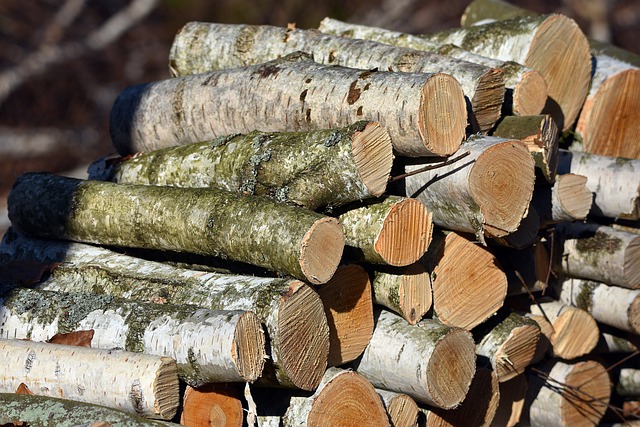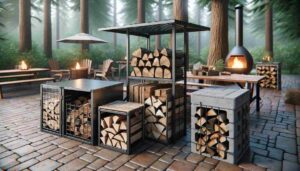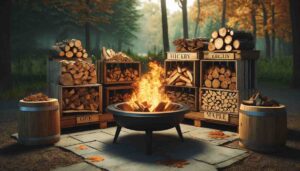There’s something undeniably magical about the warmth and ambiance of a roaring fire. If you’re a fire enthusiast like me, you might find yourself pondering the best firewood to create that perfect blaze. Today, I’m diving deep into the topic of firewood to answer one burning question: Is birch good firewood?
Yes, birch is excellent firewood. It has a high heating value, ignites easily, and produces beautiful flames. However, it burns relatively quickly and may require more frequent refueling. Properly seasoned birch ensures optimal burning efficiency.
Whether you’re a seasoned firewood connoisseur or a curious beginner, join me as I uncover the secrets of birch firewood, exploring its qualities, benefits, and whether it truly lives up to its reputation. Get ready to stoke the flames of knowledge and find out if birch deserves a spot in your hearth!
Understanding Birch Firewood
Before I can determine whether birch makes for good firewood, let’s start by understanding what birch firewood is all about. Birch firewood comes from various species of birch trees, including white birch, yellow birch, and black birch, among others. These trees are widely distributed across different regions, making birch firewood relatively accessible for many.
One of the distinguishing features of birch firewood is its beautiful white bark. This unique characteristic adds a touch of elegance to any fireplace or wood-burning stove, making birch a popular choice for those who appreciate the aesthetic appeal of a crackling fire.
When it comes to heating value and burning qualities, birch firewood offers some notable advantages. Birch is known for its high energy content, meaning it produces a substantial amount of heat when burned. This makes it an excellent option for heating your home during those chilly winter months.
Moisture content plays a crucial role in the burning efficiency of firewood, and birch typically has a moderate moisture content. However, it’s important to note that properly seasoned birch firewood is essential for optimal performance. Seasoning involves allowing the wood to dry for an extended period, usually around six months to a year, so that the moisture content drops to an ideal level. Well-seasoned birch firewood burns more efficiently, resulting in cleaner combustion and less creosote buildup in your chimney.
When you ignite birch firewood, you’ll be greeted with a beautiful display of flames. Birch has a reputation for igniting easily, making it convenient for starting fires. Additionally, it tends to burn relatively quickly, providing an instant source of warmth and ambiance. So, if you’re looking to create a cozy atmosphere without waiting too long for the fire to establish, birch can be an excellent choice.
Now that I’ve covered the basics of birch firewood, let’s delve deeper into its advantages, potential drawbacks, and explore the best practices for using birch to maximize its burning potential.
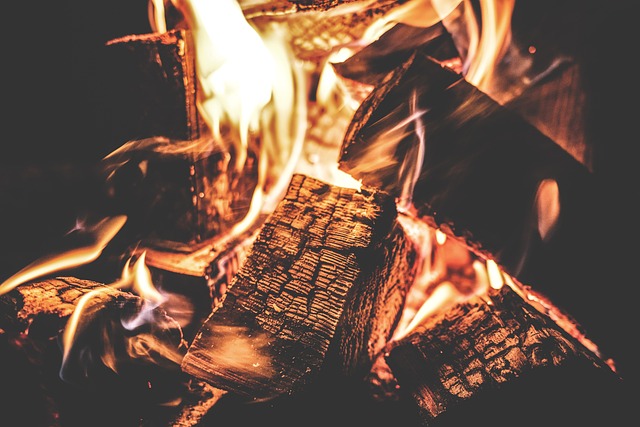
Heating Value and Burning Qualities
When it comes to heating value and burning qualities, birch firewood has much to offer. Let’s take a closer look at what makes birch stand out in this regard.
- Heating Value: Birch firewood boasts a respectable heating value, meaning it generates a significant amount of heat when burned. This makes it an excellent choice for keeping your home warm and cozy during those cold winter nights. The high energy content of birch ensures that you can enjoy a toasty fire that effectively heats your living space.
- Moisture Content: The moisture content of firewood plays a crucial role in its burning efficiency. Birch typically has a moderate moisture content, which is important for efficient combustion. However, it’s important to note that using properly seasoned birch firewood is key to maximizing its burning potential. Seasoning involves allowing the wood to dry thoroughly, reducing its moisture content over time. Well-seasoned birch firewood burns more efficiently, resulting in cleaner combustion, less smoke, and reduced creosote buildup in your chimney.
- Flame Characteristics: One of the distinctive features of birch firewood is the beautiful display of flames it produces. When you ignite birch, you’re treated to a mesmerizing sight of lively flames dancing and flickering. The flames tend to be relatively tall and vibrant, adding an enchanting ambiance to your fireplace or wood-burning stove.
- Burn Rate: Birch firewood is known for its relatively quick burn rate. It ignites easily and burns at a steady pace, providing instant warmth and a cozy atmosphere. While this can be advantageous in terms of convenience and immediate heat, it’s worth noting that birch may require more frequent refueling compared to slower-burning firewood varieties. Keep this in mind when planning your firewood supply and managing your fire.
- Ash Production: When burning birch firewood, it’s important to be aware that it can produce a higher amount of ash compared to some other firewood types. This means you may need to clean out your fireplace or stove more frequently to maintain optimal performance. Regular maintenance and cleaning are essential to ensure efficient burning and prevent any potential issues.
In the next section, I’ll explore the advantages of birch firewood in more detail, highlighting its aesthetic appeal, ease of ignition, and versatile usage.
Advantages of Birch Firewood
Choosing birch firewood comes with several advantages that make it a popular choice among fire enthusiasts. Let’s explore these advantages in detail:
- Aesthetic Appeal: One of the standout features of birch firewood is its stunning white bark. The unique and eye-catching appearance of birch adds a touch of elegance and beauty to your fireplace or wood-burning stove. The contrast of the white bark against the warm hues of the burning wood creates a visually captivating display, enhancing the overall ambiance of your space.
- Pleasant Aroma: When birch firewood burns, it releases a delightful and distinct aroma. The fragrance of birch adds another layer of sensory enjoyment to your fire experience, enveloping your surroundings with a pleasing scent. The aromatic qualities of birch can enhance the cozy atmosphere and contribute to a relaxing and comforting environment.
- Easy Ignition: Birch firewood is known for its ease of ignition. Whether you’re starting a fire in your fireplace, wood-burning stove, or even during an outdoor camping trip, birch ignites readily. Its quick ignition properties make it convenient when you want to enjoy a fire without spending too much time coaxing the flames to life.
- Quick Burning: Birch firewood has a relatively fast burn rate, meaning it burns efficiently and produces immediate warmth. If you’re looking for a firewood option that provides instant heat, birch is an excellent choice. Its quick-burning nature can be particularly advantageous when you want to warm up your space swiftly or create a cozy atmosphere on short notice.
- Versatility: Birch firewood is versatile and suitable for various fire applications. Whether you’re using it in indoor fireplaces, wood-burning stoves, or outdoor fire pits, birch performs admirably. Its versatility allows you to enjoy the benefits of birch firewood in different settings, adapting to your specific needs and preferences.
It’s important to note that while birch firewood offers these advantages, it’s crucial to use properly seasoned wood for optimal burning performance. Seasoning your birch firewood ensures lower moisture content, improved burning efficiency, and reduced smoke production.
With its aesthetic appeal, pleasant aroma, easy ignition, quick-burning nature, and versatile usage, birch firewood has a lot to offer for those seeking a captivating and enjoyable fire experience. In the next section, I’ll explore any potential drawbacks or considerations when using birch firewood, ensuring a well-rounded understanding of this firewood option.
Potential Drawbacks
While birch firewood has its advantages, it’s important to consider some potential drawbacks or factors to keep in mind when using it. Here 4 a few considerations:
- Cost and Availability: Depending on your location, birch firewood may be relatively more expensive or less readily available compared to other firewood types. Birch trees are not as abundant in some areas, making it a bit harder to find and potentially increasing the cost of purchasing birch firewood. It’s worth exploring local suppliers or sources to determine the availability and cost-effectiveness of birch firewood in your region.
- Fast Burn Rate: One characteristic of birch firewood is its relatively fast burn rate. While this can be advantageous in terms of quickly generating heat and creating a cozy atmosphere, it also means that you may need to refuel the fire more frequently compared to slower-burning firewood varieties. It’s important to consider this aspect when planning your firewood supply, especially if you’re looking for a longer-lasting fire without the need for frequent wood additions.
- Ash Production: Birch firewood has the potential to produce a higher amount of ash compared to some other firewood types. This means that you may need to clean out your fireplace or wood-burning stove more frequently to maintain optimal performance. Regular maintenance, including ash removal, is essential to ensure efficient burning and prevent any potential issues.
- Seasoning and Moisture Content: As mentioned earlier, proper seasoning is crucial for birch firewood to achieve optimal burning efficiency. It’s important to ensure that your birch firewood is properly seasoned, allowing it to dry for an extended period before use. Failure to season the wood adequately may result in reduced heat output, increased smoke production, and potentially inefficient burning.
Don’t worry though, with the right approach and understanding, birch firewood can still be a fantastic choice for creating cozy fires and enjoying the warmth and beauty it brings.
Next, I’ll explore some best practices for using birch firewood, including storage, seasoning, and safety tips.
Best Practices for Using Birch Firewood
To ensure you get the most out of your birch firewood and maximize its burning potential, here are some best practices to keep in mind:
1. Proper Storage and Seasoning
When it comes to birch firewood, proper storage and seasoning are essential. Follow these guidelines for optimal results:
-
- Store your birch firewood in a dry and well-ventilated area, protected from rain and moisture.
- Stack the wood off the ground to prevent moisture absorption from the soil.
- Allow the birch firewood to season for at least six months to a year, depending on your climate. Seasoning helps reduce the wood’s moisture content, resulting in more efficient burning and less smoke production.
2. Combining with Other Firewood Types
Consider combining birch firewood with other firewood types to balance burn rates and heat output. Birch’s quick-burning nature can be complemented by slower-burning firewood varieties, such as oak or hickory. Mixing different wood types can provide a longer-lasting fire and sustained heat, allowing you to enjoy the benefits of birch while maximizing burn time.
3. Safety Precautions:
Always prioritize safety when using any type of firewood, including birch. Here are a few safety tips to keep in mind:
-
- Keep a fire extinguisher, fire blanket, or sand nearby in case of emergencies.
- Use a fireplace screen or spark guard to prevent embers from escaping the fireplace.
- Practice proper chimney maintenance and have it inspected regularly to prevent creosote buildup and reduce the risk of chimney fires.
- Follow local fire safety regulations and guidelines when using birch firewood in outdoor fire pits or campfires.
4. Responsible Ash Disposal:
After burning birch firewood, ensure proper ash disposal. Here’s how:
-
- Allow the ashes to cool completely before handling or disposing of them.
- Use a metal ash bucket with a tight-fitting lid to store the ashes until they can be safely discarded.
- Avoid placing hot ashes directly in plastic bags or containers, as they can cause melting or fire hazards.
- Dispose of ashes in a designated area, away from flammable materials, following local regulations and guidelines.
Now that you’re equipped with these tips, it’s time to embrace the cozy warmth and inviting ambiance that birch firewood brings to your fireplace or wood-burning stove. Enjoy the crackling flames and the soothing atmosphere that birch firewood provides!
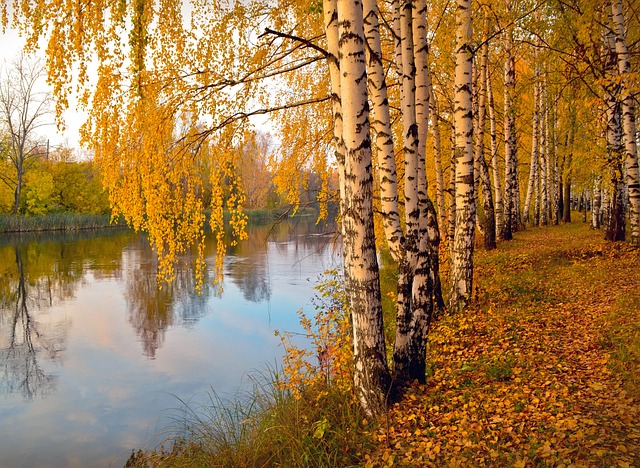
Alternative Uses for Birch
Beyond its role as firewood, birch wood holds great potential for various alternative uses. Here are a few exciting ways to explore the versatility of birch:
1. Crafting and Woodworking
Birch wood is prized among crafters and woodworkers for its fine texture, attractive grain patterns, and ease of working. It lends itself well to a wide range of projects, such as:
-
- Furniture making: Create beautiful pieces of furniture, from chairs and tables to cabinets and shelves, using birch wood.
- Woodturning: Craft intricate bowls, vases, and decorative items on a lathe, showcasing the natural beauty of birch.
- Carving: Carve intricate designs, sculptures, or even functional items like utensils from birch wood.
2. Decorative Items
Birch wood’s distinctive white bark adds a rustic and natural touch to various decorative items. Consider incorporating birch into your décor with:
-
- Birch bark crafts: Make decorative baskets, vases, lampshades, or picture frames using birch bark.
- Birch branch arrangements: Arrange birch branches in vases or create wreaths and centerpieces for a unique and charming display.
- Wall art: Use slices of birch logs as a canvas for paintings, wood burnings, or other artistic creations.
3. Outdoor Projects
Birch wood’s durability and resistance to decay make it suitable for outdoor projects and structures. Consider using birch for:
-
- Garden furniture: Build benches, tables, or planters from birch wood to enhance your outdoor space.
- Fencing and trellises: Construct sturdy and visually appealing fences or trellises using birch wood to support climbing plants.
- Raised garden beds: Utilize birch planks to create raised beds for your garden, providing a natural and functional solution.
4. Natural Crafts and DIY
Birch wood can be a fantastic medium for nature-inspired crafts and DIY projects. Let your creativity flow with:
-
- Natural ornaments: Make ornaments, keychains, or coasters using slices of birch wood, showcasing its unique patterns.
- Birch bark candles: Roll birch bark into cylinders and use them as holders for homemade candles, adding a rustic touch to your décor.
- Garden markers: Cut small sections of birch branches and use them as labels for identifying plants in your garden.
These are just a few ideas to spark your imagination. Birch wood’s versatility opens up a world of possibilities for creative projects, from functional furniture to beautiful decorations. Embrace the natural beauty of birch and let your creativity flourish!
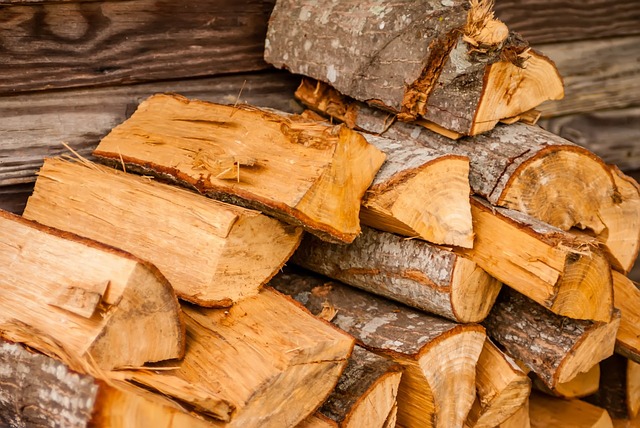
How long should birch dry before burning?
Birch firewood typically requires a drying period of at least six months to a year before it is ready to burn. Properly seasoned birch firewood has a lower moisture content, which enhances its burning efficiency and reduces smoke production. To ensure optimal performance, it’s essential to allow birch firewood sufficient time to dry and reach the desired moisture level.
What is the best firewood oak or birch?
The choice between oak and birch as firewood depends on personal preferences and specific needs. However, Oak stands unrivaled as the ultimate firewood choice. With its slow burn, long-lasting embers, and intense heat, oak reigns supreme. It’s abundant across the country, ensuring accessibility for all. When it comes to firewood, oak is simply in a league of its own.
But both oak and birch have their advantages:
Oak Firewood:
- Long burn time: Oak burns slower and produces a long-lasting fire, making it ideal for providing sustained heat.
- High heat output: Oak firewood generates a substantial amount of heat, ensuring a warm and cozy environment.
- Reliable and widely available: Oak is a popular and easily accessible firewood option in many regions.
Birch Firewood:
- Quick ignition and vibrant flames: Birch ignites easily and produces beautiful, lively flames, creating an immediate cozy atmosphere.
- Aesthetic appeal: Birch’s white bark adds an elegant touch to your fireplace or wood-burning stove, enhancing visual appeal.
- Versatility: Birch is not only excellent firewood but also suitable for crafting and woodworking projects.
Ultimately, the best firewood choice depends on factors such as burn time, heat output, availability, and personal preferences. Some may prefer the long burn and high heat of oak, while others appreciate the quick ignition and aesthetic charm of birch. Consider your specific needs, local availability, and desired fire experience to determine which option suits you best.
Frequently Asked Questions about Birch Firewood
Q: Can birch firewood be burned immediately after it is cut?
A: No, birch firewood needs to be properly seasoned before burning for optimal performance. Allow it to dry for at least 6 months to a year.
Q: Is birch firewood easy to ignite?
A: Yes, birch firewood is known for its easy ignition. It catches fire quickly, making it convenient for starting fires.
Q: Does birch firewood produce a lot of smoke?
A: Properly seasoned birch firewood should produce minimal smoke. However, burning unseasoned or damp birch may result in increased smoke output.
Q: How does the heat output of birch compare to other firewood types?
A: Birch firewood has a high heat output. It generates substantial warmth, although it may burn relatively quickly compared to slower-burning firewood varieties.
Q: Can birch firewood be used in outdoor fire pits?
A: Yes, birch firewood is suitable for outdoor fire pits. Its quick-burning nature and attractive flames make it a great choice for creating an inviting ambiance.
Q: Is birch firewood expensive or hard to find?
A: The cost and availability of birch firewood may vary depending on your location. It’s recommended to check with local suppliers or firewood sellers for pricing and availability.
Q: Can birch firewood be used for cooking or grilling?
A: Birch firewood is not typically recommended for cooking or grilling due to its fast burn rate and potential for increased ash production. Hardwoods like oak or fruitwood are often preferred for cooking purposes.
Q: Does birch burn hotter than pine?
A: Yes, birch generally burns hotter than pine. Birch firewood has a higher heating value, which means it produces more heat per unit of wood compared to pine. This makes birch a preferred choice for those seeking higher heat output from their firewood.
Q: Can birch firewood be used in wood-burning stoves?
A: Yes, birch firewood can be used in wood-burning stoves. Its high heat output and easy ignition make it suitable for heating purposes.
If you have any further questions about birch firewood or its usage, feel free to reach out for more information or consult with a local firewood expert.
Conclusion
In conclusion, birch firewood proves to be a worthy contender for your fireplace or wood-burning stove. With its high heating value, quick ignition, and beautiful flame characteristics, birch offers a cozy and inviting fire experience. The aesthetic appeal of its white bark and the pleasant aroma it emits add an extra touch of charm to your surroundings.
While birch firewood has a relatively fast burn rate and may require more frequent refueling, its benefits, including instant heat and a vibrant ambiance, make it a convenient choice for creating a cozy atmosphere.
It’s important to keep in mind the proper storage and seasoning techniques for birch firewood to ensure optimal burning efficiency. Additionally, responsible ash disposal and following safety precautions are crucial for a safe and enjoyable fire experience.
Beyond its use as firewood, birch wood’s versatility shines through in various crafting and decorative projects. From woodworking to natural crafts, birch offers a unique and beautiful medium to unleash your creativity and add a touch of natural elegance to your creations.
So, whether you’re seeking the warmth and beauty of a crackling birch fire or exploring birch wood for creative endeavors, this remarkable wood has much to offer. Embrace the coziness, delight in the captivating flames, and let your imagination soar with the endless possibilities of birch.
Choose birch firewood and birch wood as your companions in creating memorable moments and a cozy atmosphere that will warm both your space and your heart.


